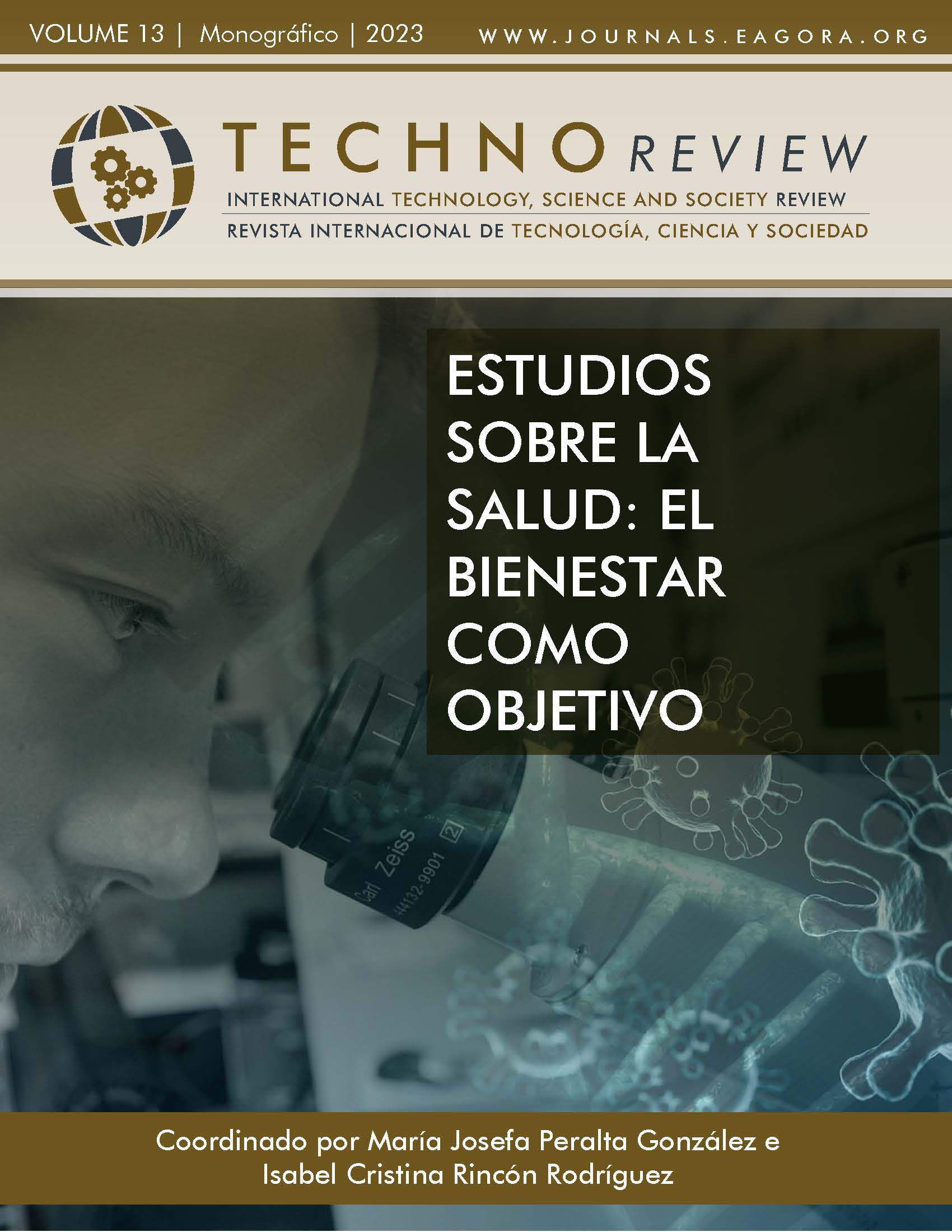Intervention model for exposure and control of biological risk. Study of universal precautions in nursing staff
DOI:
https://doi.org/10.37467/revtechno.v13.4963Keywords:
Microbiological hazards, Ambient, Chemical hazard, Diseases, Security, Control, Good practicesAbstract
In recent years, analyzes were carried out in hospitals in Colombia that showed that there were patients who contracted dangerous bacteria during their stay in some health institutions. In addition to patients, all health personnel are exposed to these pathogens, as they are present in the environment. They are threats of natural origin that extend beyond private spaces and activities of people, and that due to their magnitude, speed and contingency require a management process in which better and greater control is required to mitigate the risk. resulting effect.
References
Álvarez, S. E., & Riaño, M. I. (2018). La política pública de seguridad y salud en el trabajo: el caso colombiano. Revista Gerencia y Políticas de Salud (revista electrónica), 17(35). DOI: https://doi.org/10.11144/Javeriana.rgps17-35.ppss DOI: https://doi.org/10.11144/Javeriana.rgps17-35.ppss
Bejarano Garay, M. J., Solano Chaux, L. E., Rodriguez Losada, G. A., Rodriguez Quintero, M. M., & Vasquez Valderrama, J. E. (2019). Investigación aplicada a calidad de vida laboral en el hospital San Vicente de Paul de Paipa (Tesis de grado, Facultad de Sociedad, Cultura y Creatividad. Politécnico Gran Colombiano, Institución universitaria). Politécnico Gran Colombiano, Sistema Nacional de Bibliotecas SISNAB. http://hdl.handle.net/10823/1558
Boillot C., & Perrodin Y. (2008). Joint-action ecotoxicity of binary mixtures of glutaraldehyde and surfactants used in hospital: Use of TI model and Isoblogram representation. Ecotoxicology and Environmental Safety, 71, 252-259. DOI: 10.1016/j.ecoenv.2007.08.010 DOI: https://doi.org/10.1016/j.ecoenv.2007.08.010
Call, T. R., Auerbach, F. J., Riddell, S. W., Kiska, D. L., Thongrod, S. C., Tham, S. W., & Nussmeier, N. A. (2009). Nosocomial contamination of laryngoscope handles: challenging current guidelines. Anesthesia and analgesia, 109(2), 479. DOI: https://doi.org/10.1213/ane.0b013e3181ac1080
Castro, Diana Morales, Arias, Mónica Quesada, & Ovares, Carlos Ugalde. (2016). Detección de contaminación en el equipo anestésico de sala de operaciones del Hospital México, junio 2014. Medicina Legal de Costa Rica, 33(2), 2-11. https://www.scielo.sa.cr/pdf/mlcr/v33n2/2215-5287-mlcr-33-02-2.pdf
European Commission. (June 28, 2021). Commission Staff working document. Accompanying the Communication from the Commission to the European Parliament, the Council, the European Economic and Social Committee and the Committee of Regions, EU strategic framework on health and safety at work 2021-2027. Occupational safety and health in a changing world of work. https://eur-lex.europa.eu/legal-content/EN/TXT/?uri=CELEX%3A52021DC0323
Faisal, A., Amjad, A., & Zehra, N. (2016). Impact of facial burn injury on self esteem of burn patients: a hospital based study from Karachi. Journal of the Dow University of Health Sciences (JDUHS), 10(1), 25-30. DOI: https://doi.org/10.36570/jduhs.2016.1.486
Filatov, A., Sharma, P., Hindi, F., & Espinosa, P. S. (2020). Neurological complications of coronavirus disease (COVID-19): encephalopathy. Cureus, 12(3), e7352. doi:10.7759/cureus.7352 DOI: https://doi.org/10.7759/cureus.7352
Lara García, Y. E., & Rojas Meza, M. J. (2019). Bioseguridad en internas de enfermería en la práctica hospitalaria. Universidad Nacional de Chimborazo (Bachelor’s thesis, Universidad Nacional de Chimnborazo). Repositorio Institucional Universidad Nacional de Chimnborazo
Lozano-Vargas A, & Vega-Dienstmaier J. V. (2018). Construcción y propiedades psicométricas de la Escala de Ansiedad de Lima de 20 ítems (EAL-20). Rev Neuropsiquiatr, 81(4), 226-234. DOI: https://doi.org/10.20453/rnp.v81i4.3437
Ministerio de Salud y Protección Social. (2004). Informe de enfermedad profesional en Colombia años 2001-2002 “Una oportunidad para la prevención. Informe. MINSALUD.
Ortalan, M.G.S., & Ayub, M.A.Z. (2007). Cytotoxicity and Genotoxicity of untreated hospital effluents. Brazilian Archives of Biology and Technology, 50, 637-643. DOI: https://doi.org/10.1590/S1516-89132007000400009
Sabio, R. (2020). Covid-19:¿Cómo podemos proteger al personal sanitario expuesto?. Revista Argentina de medicina, 8(1), 83-85.
World Health Organization. (2003). Laboratory Biosafety Manual. WHO Library Cataloguing-in-Publication Data. https://www.who.int/publications/i/item/9241546506
World Health Organization (WHO). (2011). Report on the Burden of Endemic Health Care-Associated Infection Worldwide. WHO Library Cataloguing-in-Publication Data. https://www.who.int/publications/i/item/report-on-the-burden-of-endemic-health-care-associated-infection-worldwide
Downloads
Published
How to Cite
Issue
Section
License
Those authors who publish in this journal accept the following terms:
- Authors will keep the moral right of the work and they will transfer the commercial rights.
- After 1 year from publication, the work shall thereafter be open access online on our website, but will retain copyright.
- In the event that the authors wish to assign an Creative Commons (CC) license, they may request it by writing to publishing@eagora.org








